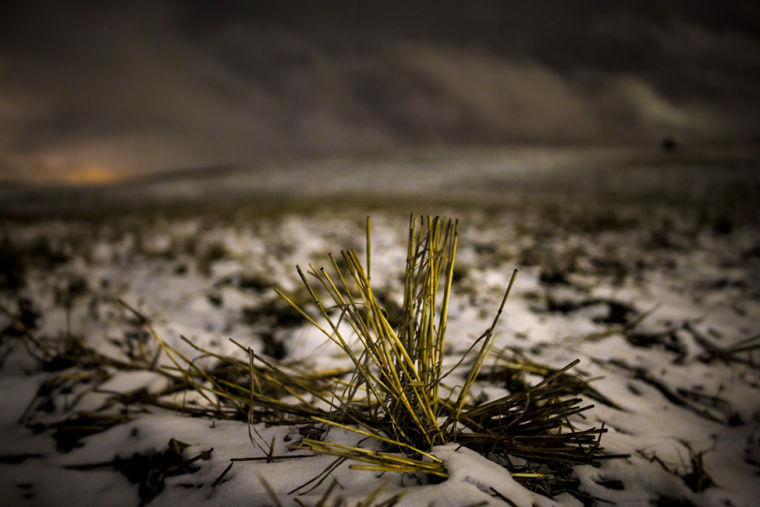Palouse wheat fields feel the chill of the year’s cold snap
January 31, 2014
The unusual weather patterns this winter are affecting wheat growth and research in both negative and positive ways.
Arron Carter, assistant professor of crop and soil sciences, said the issue is not necessarily the cold temperatures Pullman experienced in December but rather the dry weather that accompanied it.
“Snow cover will insulate the plants,” Carter said. “The air temperature will be lower, but soil temperature will be higher.”
Carter said the more snow the better, but even a few inches can provide the insulation the wheat needs.
Timothy Murray, professor and extension plant pathologist, said it is not the amount of cold so much as it is the wind mixed with in it. There is less chance of a freezer burn effect on the soil because there was little wind during the cold snap in early December.
Although there is a chance some wheat crops may be damaged, it is difficult to know right now, Carter said.
Drew Lyon, endowed chair in small grain extension and research, agreed that it is difficult to tell if the weather was truly damaging to the plots of wheat.
“The only way to know for sure is to dig one up, warm up the roots, and grow it inside in warmer temperatures,” Lyon said. “You have to bring it in to see if there’s any new growth out there.”
Carter said there are a variety of winter wheat seeds that can be planted with the ability to withstand a range of temperatures.
Most can withstand a range of 14 degrees to minus 4 degrees Fahrenheit, which puts the current crops right on the borderline, Carter said.
The impact of the cold on the growth of this season’s wheat crops brings concern to those at WSU who depend on the growth of the wheat for their research.
For Lyon, the cold weather has the potential to set back his research on controlling small grains.
Lyon said his work with herbicides can sometimes damage wheat plants, and the cold weather can damage the plants further, which could potentially ruin his experiment.
“From a research standpoint, it’s kind of a bummer,” Lyon said. “Unlike farmers, it’s hard to change an experiment halfway through.”
If the weather does damage wheat plots, researchers can lose up to a year of data, Lyon said.
Lyon said this is often more detrimental to younger researchers who are still working toward tenure and promotion packages.
However, Carter’s research is not inhibited. For Carter, the cold weather is actually aiding in his research of developing winter-resistant wheat.
“For us in a sense, this is the opportunity to find lines that don’t have winter tolerance and remove them from the program,” Carter said. “Often what’s not good for the growers is good for us from a research standpoint because then we can develop more tolerant seeds.”
Murray’s research could experience mixed effects from the weather.
He focuses mainly on winter wheat research, and the diseases it can face. With the cold weather, it can kill some funguses while allowing others to flourish, Murray said.
Carter said the effect of the unusual winter weather varies across the state.
“Farmers are out looking at their crops- most of them know the variety they’ve picked,” Carter said.
He said some are worried, but some know they planted a more winter-resistant strain of wheat.
However, if crops are damaged, farmers have the opportunity to replant their fields in the spring, with spring wheat, at the relatively low cost of about $18 per acre, Carter said.
Although it is relatively inexpensive to replant the fields, Carter said farmers would prefer not to because winter wheat has significantly higher yields than spring wheat.
“These kinds of years happen,” Murray said. “The greatest concern right now is how dry it’s been. If the dry pattern continues into the spring, then that will be a big concern, because water is needed for yield.”
With the weather varying drastically throughout the winter so far, different aspects of wheat growth are taken into account, and WSU’s researchers are continuously working to adapt.
“Every year is different, and we have to take them all into account because the farmers have to,” Murray said.






















